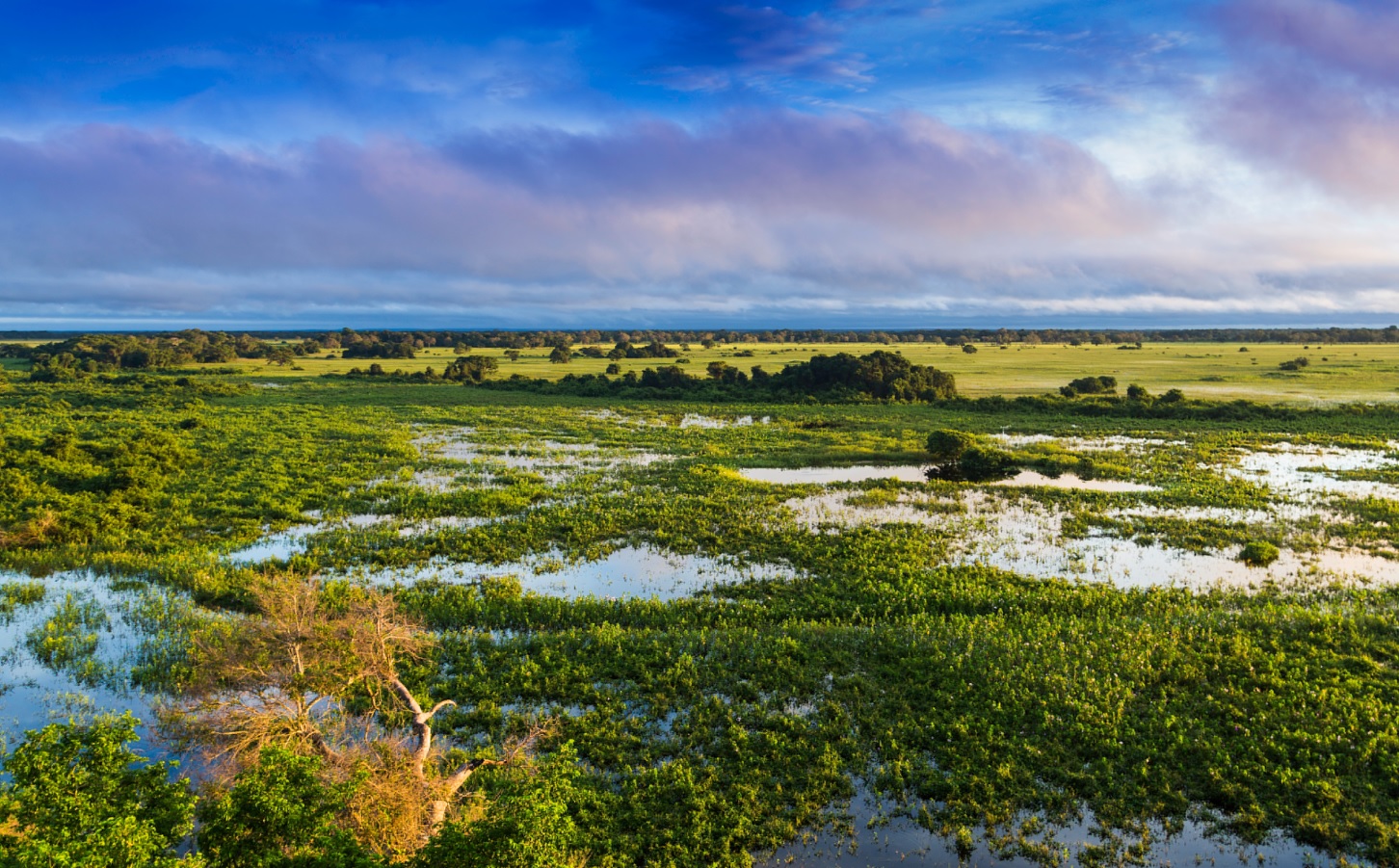IAEA using isotopic techniques to study and wetland protection
Improved wetland protection and management can help avoid continued damage to these important ecosystems.

In 2020 wildfires destroyed approximately 30 per cent of the Pantanal, South America’s largest wetland spreading across Bolivia, Brazil and Paraguay. For the last 60 years, one of Central Africa’s historically large wetlands, Lake Chad, has been slowly disappearing.
World Wetlands Day, celebrated by the United Nations for the first time this year, highlights the importance of the conservation and sustainability of one of the world’s most threatened ecosystems for the health of people and the planet. The IAEA contributes with the use of isotopic techniques to their study and protection.
Improved wetland protection and management can help avoid continued damage to these important ecosystems. Wetlands provide homes to animals and plants and play a crucial role in climate change mitigation and adaptation by absorbing carbon and providing natural protection against storms and flooding. Yet, wetlands are disappearing fast due to human activity: they are drained to create agricultural land or are impacted by the overuse of neighbouring groundwater systems for fresh water. With a global loss of 35 per cent since 1970, they are also increasingly vulnerable to changes in land use around the world.Wetlands, groundwater and isotopic techniquesWetlands and groundwater systems are connected as wetlands occur in areas where groundwater is discharged and serve as a transition point between groundwater and surface water. “Understanding this connectivity is critical for the long-term protection of wetlands as well as sustainability of groundwater systems that depend on them,” said Lucia Ortega, Isotope Hydrologist at the IAEA.
The IAEA is launching a new coordinated research project (CRP) assessing the impact of hydrological change, driven by land use changes and climate change, in wetland-groundwater ecosystems. The IAEA will draw up best practice guidelines on the use of stable and radioactive isotopes to evaluate groundwater resource sustainability without damaging wetlands (see the Science box).Understanding wetland interconnections for conservationWetlands store more carbon than any other ecosystem. The carbon is stored in the vegetation, litter, peats, organic soils and sediments that have built up over the years. So, when wetlands degrade, they release a lot of carbon dioxide, becoming significant sources of planet-warming greenhouse gases. As changes in rainfall patterns can lead to a higher occurrence of floods or droughts, wetlands also play an important role as a buffer protecting land from flooding or drying and helping to prevent damage to infrastructure. By using environmental isotopes to understand how the wetland system is sustained, we can improve water management practices and conserve wetlands, Ortega said.
In South Africa, where almost 50 per cent of wetland ecosystems are critically endangered due to erosion, farming, mining and other human activities, isotopic techniques are already used to understand recharge dynamics and interactions with surface water systems, and to improve conservation. “These approaches are crucial for predicting climate change impacts and they validate and verify model hydrological simulations,” said Andrew Watson, Hydrologist at Stellenbosch University. “Isotopes can help formulate more concrete conceptual models.”
In addition to South Africa, over the years, the IAEA has supported the improved understanding of using isotopic techniques to assess wetlands in Bolivia, other countries in the Andes region and worldwide. The IAEA, in accordance with the global Ramsar Convention on Wetlands of International Importance Especially as Waterflow Habitat, is continuing this work through the new CRP by developing methodologies for countries to better assess the current state of their wetlands and develop adaptation strategies to address climate change impacts.
- READ MORE ON:
- IAEA
- World Wetlands Day
- Andrew Watson










